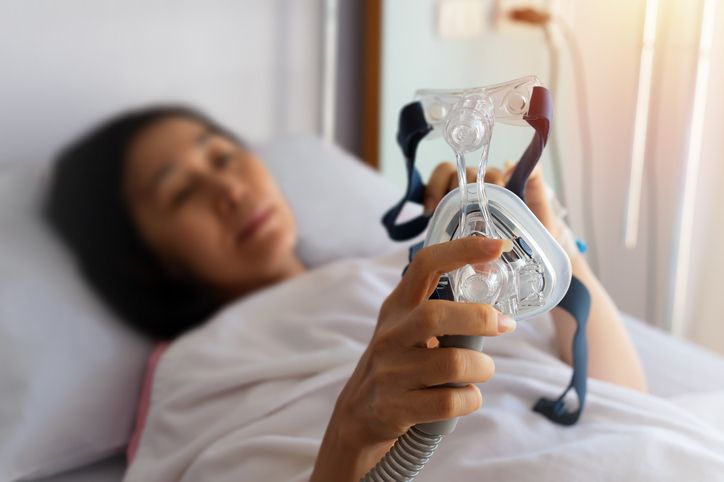Sleep Care
Want to learn more about this at Kettering Health?
More than 50 million Americans wrestle with getting a good night’s sleep due to a sleep disorder. Affecting the body’s ability to recover during rest, sleep disorders dramatically disrupt the quality, timing, and duration of sleep. Of the over 80 sleep disorders, the most common are insomnia, restless leg syndrome, narcolepsy, and sleep apnea.
Sleep apnea can be particularly dangerous. Left untreated, sleep apnea can lead to more severe issues “like cardiovascular disease,” says Dr. Kevin Carter, medical director of the Sleep Center at Kettering Health Main Campus.
What is sleep apnea?
Sleep apnea interrupts a person’s breathing when they sleep. More than 20 million Americans have sleep apnea, and it’s difficult to identify on your own. Mostly because the typical signs of sleep apnea—snoring, gasps for breath, or pauses without inhaling—happen when you’re sleeping.
Additionally, those with sleep apnea may chalk other signs up to a few bad nights’ sleep.
“During the day, they might sit down and become sleepy or drowsy. Or they find they are sleepy when trying to drive,” says Dr. Carter. “Sometimes a bed partner reports they’re snoring or gasping during sleep. They often don’t believe they snore.”
It’s important to take these signs seriously and not overlook them.
“If you snore or stop breathing while sleeping,” Dr. Carter explains, “you should take that seriously and talk to your primary care doctor. It could be a symptom of a deeper issue.”
Treating sleep apnea
A common and effective treatment for sleep apnea is a CPAP (continuous positive airway pressure) machine. But many people hesitate to use one, believing they’ll become dependent on it.
“The CPAP doesn’t breathe for you—it helps maintain the airway,” says Dr. Carter. “It’s a prescribed treatment, like prescription eyewear, that works only while you wear it.”
Other treatment options for sleep apnea include dental devices and various types of CPAP masks.
A sleep study is the best way to assess your sleep, any possible sleeping disorders, and the best treatment.
Sleep study 101
A sleep study is a non-invasive exam done in a controlled lab to diagnose sleep disorders and determine treatment. “We use sleep studies to help determine why people are having difficulty getting adequate sleep, getting to sleep, falling back asleep, or waking up after a good duration of sleep and still feeling groggy or not rested,” says Dr. Carter.
When someone needs a sleep study, their primary care physician will refer them to a sleep specialist, who will review their medical history, talk about symptoms, and then screen for a variety of sleep disorders.
“Many people have misconceptions about sleep studies,” Dr. Carter says. “Some are apprehensive about doing them, and some people don’t want to be watched while sleeping. Others feel anxious about the hospital room environment. But it’s not that way at all.”
Dr. Carter explained the lab is set up like a bedroom at home, as comfortable and private as possible. A technician is on hand both to monitor the test and to see to the patient’s safety during the examination.
The exam data is scored by the technician, followed by a review of the study result. Your doctor will use the results to create a treatment plan.










